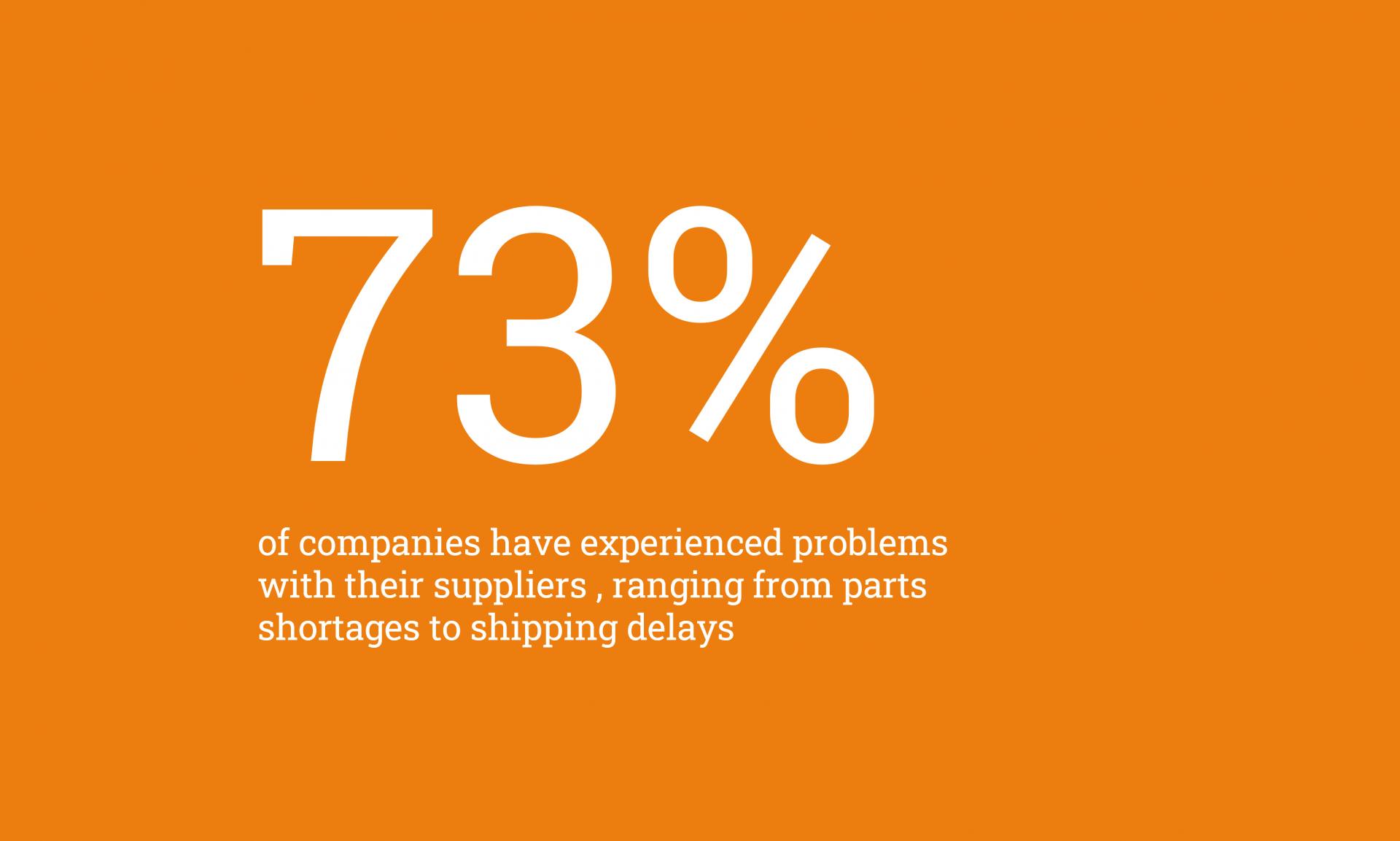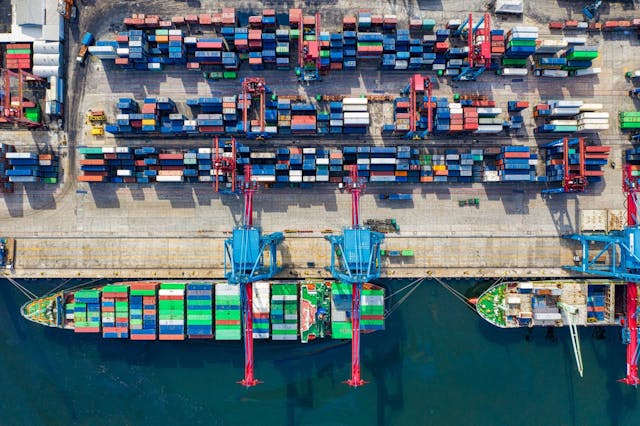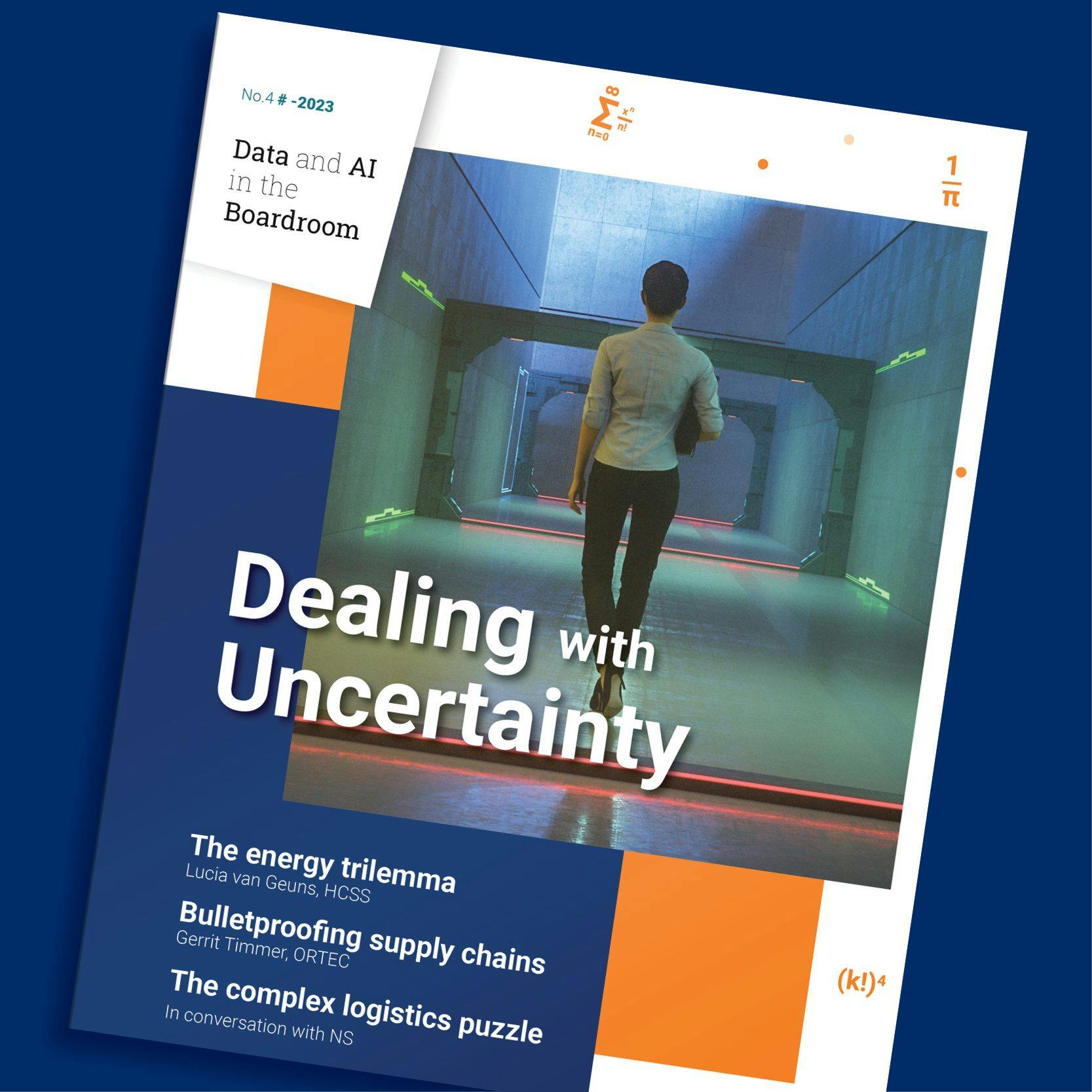We must bulletproof supply chains to streamline disrupted flows
Read time: 8 minutesAutomotive manufacturers have idled production, beverage producers are faced with glass bottle shortages, and demand for paper has been vastly outstripping supply. All this is compounded by acute staff shortages across a variety of industries. Is there any way of avoiding these types of problems in the future? “There’s no reason to stop using global supply chains altogether, unless you’re considering environmental factors. But we must do a better job in identifying bottlenecks and make the system less prone to vulnerabilities, so as to ensure that potential disruptions have a less detrimental impact.”
Interview with Gerrit Timmer, co-founder and Chief Science Officer (CSO) at ORTEC

For decades, businesses have prioritized efficiency when selecting suppliers, building production facilities, and deciding how much inventory to keep on hand. They would move their production operations to low-wage countries, consolidate orders so as to maximize economies of scale, and attempt to minimize their physical presence in high-tax jurisdictions. The just-in-time system of inventory control emphasized minimizing stocks and the use of flexible short-term contracts that could quickly be adapted to accommodate shifts in demand. As Gerrit Timmer acknowledges, “Keeping a lean inventory certainly has its advantages, including cost savings and reducing the risk of unsellable products. But the pandemic has shown interdependencies within specific supply chains are more substantial than previously estimated – too substantial, in some cases.”

Gerrit Timmer, Co-owner of and Chief Science Officer at ORTEC
"Keeping a lean inventory certainly has its advantages. But the pandemic has shown interdependencies within specific supply chains are more substantial than previously estimated."
Container flows struggle to pick up speed
Timmer, summarizing the problem: “All processes and supply chains have been progressively optimized over the years, and businesses these days have fewer semifinished products and end products in stock than 30 years ago. We imported just-in-time systems from Japan that ensure you can seamlessly coordinate your activities and deliver your products across the entire supply chain, with significantly less intermediate stock. That means you end up with lower stock expenses and reduce your risk of being stuck with unsold inventory. In the clothing industry, around half of all items produced are thrown out, because fashion trends are tricky to predict. Manufacturers need to plan their production well ahead of time, and sometimes colors turn out different than they intended. It helps to become flexible in managing these types of eventualities, but back when there was plenty of inventory you could at least keep your production facility running even if there were other issues. The danger we’re dealing with right now is that the systems work flawlessly, but that supply chain disruptions bring them to a crashing halt.” He cites Dutch postal company PostNL’s mail sorting facility in the town of Nieuwegein as an example: “They get trucks coming in to unload packages, which are then delivered by vans throughout the country. While their sorting process is incredibly efficient, everything falls apart as soon as there’s a disruption. If an assembly line stops working, they’re up to their necks in packages within minutes, because there’s no physical storage space to keep them all. PostNL has obviously put a lot of thought into this, and their technical team is on hand 24/7 to prevent any hiccups. Let’s then compare that to the flow of goods making their way across the planet. The system usually works impeccably: manufacturers produce their goods in areas where expenses are low and the flows are all seamlessly integrated. The Covid pandemic has thrown all that into disarray. Since production had been temporarily suspended during lockdown, or due to import restrictions, the system faltered. Some raw materials or products are simply not available anywhere right now, and container flows have stopped.”
“When major disruptions occur, interdependencies turn out to be more substantial than people thought and catch almost everyone by surprise.”

Option value of AI
Research by McKinsey shows that, since the start of the pandemic, 73 percent of companies have experienced problems with their suppliers, ranging from parts shortages to shipping delays. Many organizations are therefore thinking about how to avoid these types of problems in the future. Timmer: “What went wrong during the most recent financial crisis, and the current crisis as well, is that the level of globalization had been underestimated. When major disruptions occur, interdependencies turn out to be more substantial than people thought and catch almost everyone by surprise.” Even though we knew a pandemic was a realistic threat, we were all still blindsided by Covid-19.” So manufacturers would have done well to consider the flows of goods in advance: “What will go wrong if there’s a chink in the armor, and how can we fix it? You need a plan B. You want to find out what parts of the global transportation system are most vulnerable, so you can prepare for any bottlenecks and disruptions. You need to look ahead and do at least some of the math in advance, so you can determine your level of vulnerability. The first step of any good preparation process is to create a number of scenarios. If something then actually happens and you need to act, it helps if the organization and the types of skills you need are already in place. In the case of Covid, hospitals – and basically the entire healthcare sector – were caught flat-footed.” It’s impossible for any company to prepare for all potential disasters, but even the scenarios that do not materialize can still be useful to the organization,” Timmer said. “Since many IT projects end up failing, they’re considered high risk, but the other side of the coin is that any company that neglects to invest in IT will go belly-up eventually. I refer to that as the ‘option value’ of IT: the value of having the option to respond more effectively to changed circumstances is substantial. The Internet may not have been created to weather the coronavirus pandemic, but the size of the disaster would have been so much larger if we hadn’t had the Internet. For starters, how could businesses have operated over the past two years without platforms like Teams and Zoom? The same is true for data collection and analysis and creating AI groups: it’s worth a lot merely to have the option to take advantage of these resources when an issue does arise. The option value tends to be greater than the purpose for which you were originally using the resource.”
“Businesses need to put more emergency systems in place to better be able to cushion the blows.”
Better protection against disruption
Since supply chains are becoming more complex and are more vulnerable to disruption caused by natural disasters, some multinationals have begun looking into creating local-for-local supply chains. Many companies are using technology to quickly be able to identify delays in the supply chain. Timmer acknowledges that “businesses need to put more emergency systems in place to better be able to cushion the blows.” “The problems and opportunities presented by Covid vary by industry and by company, but our industry can provide support in virtually all cases. We can calculate the impact of certain strategies and help to optimize decisions. And then there are some things you should possibly stop doing altogether. Vulnerability to specific disruptions could be a reason to ease off on your drive for optimization.” However, he believes that in essence little will change: “Barring a few tweaks here and there, we will more or less return to the old system. While some people say it’s going to be soon, others believe it could take a while. But they really mean the same thing: a few years. Things will likely be back to normal by 2024. Still, now is the perfect time to investigate how things might be improved. Manufacturers may switch to a slightly different, more solid solution that is less vulnerable to these types of disruptions. Now that the supply of semiconductor chips has stalled and we’re dealing with a global chip shortage, production has been scaled back, so you would need to start reorganizing your business right now to prevent that from happening again in the future.”

"Supply chains across the entire Western world are currently faced with staff shortages. People have become the ‘bottleneck'."
Staff shortages
Timmer believes that route planning and optimization tools could serve to streamline disrupted supply chains. “One potential major hurdle in going back to the ‘new normal’ is the current human resource shortages everywhere. “Supply chains across the entire Western world are currently faced with staff shortages. People have become the ‘bottleneck.’” Businesses are bending over backwards to find people, but they’re generally just not available. “The main challenge for grocery chains is no longer holding the largest market share, but rather being able to supply the country. They’re happy when the weather’s bad, because that’s when scooter delivery drivers are more likely to switch over to their vans.” Companies should therefore make employee satisfaction more of a priority and use their existing resources more efficiently. “Right now, you need to do that with what you’ve got. If you have the right workforce scheduling tool, you can keep track of the work to be performed and the number of people available to do that work. That allows you to create staff schedules with the purpose of doing the work as efficiently as possible, as well as keeping the work enjoyable for your employees. In other words: it tells you how you can get as much work done as possible with your existing staff and how you can make this work more appealing, for example by allowing workers to set their own schedules. You can use workforce scheduling combined with route planning tools to keep production levels stable and be more productive and efficient with the same fleet of vehicles. An added benefit is that standard workforce scheduling solutions can be used right away in these unpredictable times.” In more general terms, Timmer anticipates staff shortages even in the slightly longer term: “We’re going to see demand go through the roof, especially when it comes to certain skills related to AI, data science, and applied mathematics. We need to think carefully about the types of skills we will need in the future. How do you make sure these skills are up to par within your own organization? Since these staff shortages are not likely to be resolved in the foreseeable future, that’s one more reason to keep your employees happy.”
“We’re going to see demand go through the roof, especially when it comes to certain skills related to AI, data science, and applied mathematics. We need to think carefully about the types of skills we will need in the future.”
About Gerrit Timmer
With more than 40 years of experience in applied mathematics within the top echelons of the business world under his belt, Prof. Gerrit Timmer has what it takes to separate fact from fiction when it comes to artificial intelligence, algorithmics and data science. He is widely recognized as an authority on applied mathematics and Operations Research and is one of the country's leading experts in applying algorithmics. To demonstrate to the world the power and potential of applied mathematics, he teamed up with several of his fellow students to found ORTEC in 1981, which has since become a global powerhouse of data-driven decision-making. He is currently ORTEC’s Chief Science Officer (CSO).

Download your magazine
This article is part of the 4th issue of our magazine Data and AI in the Boardroom. Get your copy now.
We've asked leading figures in different sectors about how their organizations plan for the predictable and prepare for the unpredictable, and how using data and analytics in innovative ways help them to deal with uncertainty.

Don't miss out on the next insights
Sign up to our mailing list and be the first to receive our newest insights and digital magazine in your mailbox on a quarterly basis.